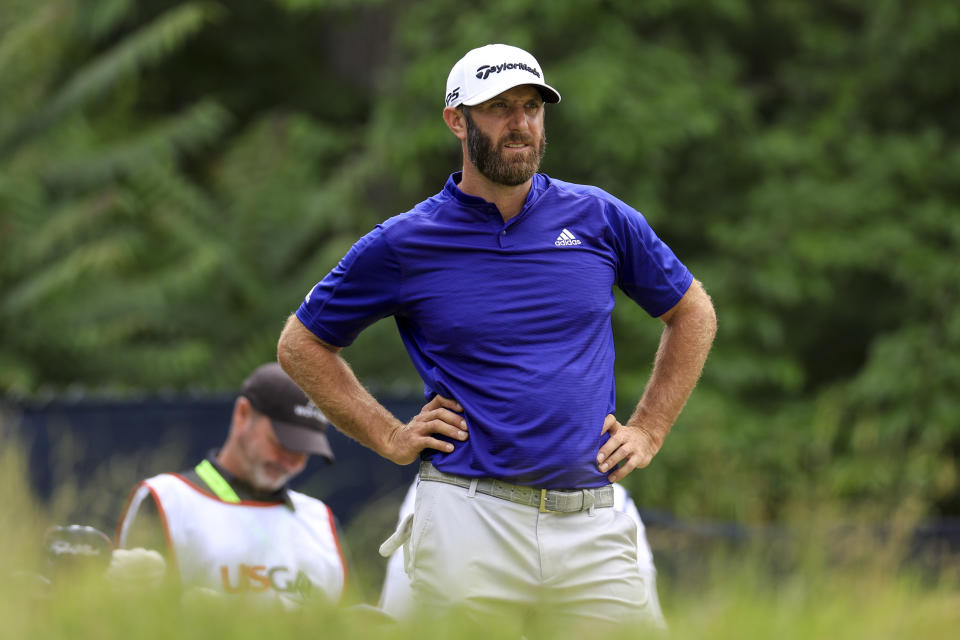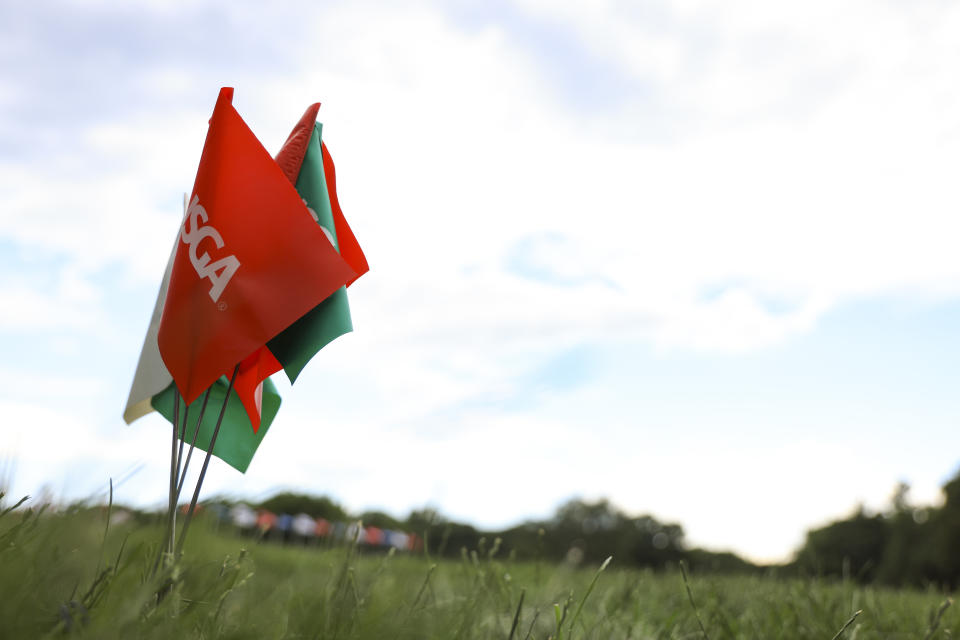U.S. Open: 5 things we learned Sunday, from Matt Fitzpatrick’s work ethic and LIV Golf prep to the USGA’s set up

BROOKLINE, Mass. — On a chilly, overcast New England day, the lead at the 122nd U.S. Open went back and forth throughout the afternoon. Matt Fitzpatrick, Will Zalatoris and Scottie Scheffler all reached 6 under during their rounds at The Country Club on Sunday, but only one of them, the Englishman who won the 2013 U.S. Amateur at this course, was able to finish there.
Fitzpatrick becomes the third golfer to win a U.S. Amateur and U.S. Open on the same course, joining Jack Nicklaus at Pebble Beach and Juli Inkster at Prairie Dunes.
Here are five things we learned on Sunday at The Country Club.
U.S. Open: Scores | Winner’s bag | Prize money
Fitzpatrick did it the hard way

Matt Fitzpatrick plays from the fairway on the 14th hole during the final round of the U.S. Open golf tournament. (Photo: Peter Casey-USA TODAY Sports)
Last year, Jon Rahm, one of the most powerful players in golf, won the U.S. Open at Torrey Pines. The year before that, it was Bryson DeChambeau, one of the biggest hitters on the PGA Tour (or LIV Series starting in a few weeks). The year before that, Gary Woodland, another power player, won the U.S. Open at Pebble Beach.
Matt Fitzpatrick has always been an outstanding putter and possessed a solid short game, but recently has gotten longer off the tee.
“(My coach and biomechanist Sasho Mackenzie) gave me this speed stick called The Stack. I’ve been doing that religiously week in and week out,” Fitzpatrick said Sunday evening. “It’s like going to the gym basically. It’s like a training program. I’ll be honest, it’s worked wonders. I feel like maybe three years ago if I was in this position, four years ago, and I was playing with Will in the final group, I’d be concerned that I’m going to be 15, 20 behind him. And I felt comfortable all day that I was going to be past him, which to me gives me confidence obviously going into the next shot knowing that you’ve got less club.”
During the 2018-19 PGA Tour season, Fitzpatrick ranked 151st in driving distance on Tour (287.9 yards per drive), but this season he is up to 298 yards. That’s still 108th, but he ranks 40th in driving accuracy, so while he’s 11 yards longer, he still hits about 65 percent of the fairways.
On demanding golf courses like Southern Hills last month during the PGA Championship and this week at The Country Club, which featured thick rough and fescue along the fairways, he ranked fifth in driving accuracy and was 36th in driving average at 309 yards.
Fitzpatrick is also legendary on Tour for his work ethic. He has tracked every shot he has hit in competition and practice rounds for the last 12 years. If he continues to put in the work, more victories could be on the way.
Zalatoris has the pieces but hasn't put them together. Yet.

Will Zalatoris lines up a putt on the 18th green during the final round of the U.S. Open golf tournament. (Photo: Aaron Doster-USA TODAY Sports)
It was an odd day for Will Zalatoris because his putter made up for shortcomings off the tee and from the fairway. Typically, that’s not the case.
Zalatoris hit just seven of 14 fairways on Sunday, contributing to only 11 of 18 greens in regulation. He came into the U.S. Open ranked No. 1 in strokes gained off the tee. It’s tough to win a tournament, especially a major championship, if the foundation of your game doesn’t show up on Sunday.
“Considering where I drove it today, the fact I was even under par was obviously pretty nice,” Zalatoris said after signing for his 69. “I thought I made a lot of nice putts just to keep myself in it. Stealing one on 9, saving par on 13. I really felt great with the putter all week, and I hit a great putt on 18. It just happened to hang out there.”
This is now three close calls in major championships for Zalatoris. He was the runner-up at the 2021 Masters, lost in a playoff last month at the PGA Championship and tied for second today at the U.S. Open. He has the prototypical modern game but must put the pieces together for four rounds if he wants to win. He’s 160th on the PGA Tour in strokes gained putting (0.227). If he can improve that and just become a tour-average putter, so his putting doesn’t cancel out his excellent iron play, he will have a long and successful career.
LIV Golf may not be good preparation for the majors

Dustin Johnson stands at the fifth tee during the first round of the U.S. Open golf tournament at The Country Club. (Photo: Aaron Doster-USA TODAY Sports)
At the start of the U.S. Open, there were 14 golfers who either played in the first LIV Series event in London or who announced they are going to play LIV Series events in the future, but none of them were in real contention by Sunday, and most of them missed the cut. Dustin Johnson, the 2016 U.S. Open winner, was the “Low LIV” at 2 over through 54 holes, and he finished Sunday at 4 over (T-24).
The PGA Tour has suspended its members who played in the LIV Series event in London, and golfers who play at the end of June in the next LIV Series event will also assuredly get indefinitely suspended by Jay Monahan, which will dramatically reduce playing opportunities in big events and against elite fields. Remember, LIV Series events are 54 holes, and there is no cut, so while they are lucrative, they may not be the best place for a golfer to get sharp before a major championship. The tough questions about being involved with Saudi Arabia will also surely also a distraction for LIV Series players in majors to come.
The USGA really doesn't want a repeat of Shinnecock or Olympic

USGA ball marker flags during the second round of the U.S. Open (Aaron Doster-USA TODAY Sports)
The Country Club proved to be an excellent venue for the United States Golf Association, and thanks to the wind and cool temperatures provided by Mother Nature, the course was as challenging to play as it was beautiful to see.
After Friday’s round, some golf lovers were concerned that 23 golfers were under par. For them, carnage and struggle are what the U.S. Open is all about, but it’s now clear that if the USGA is going to make a mistake when setting up courses, it will err on the conservative side. The fairways were narrow, the greens were fast and the rough was thick and lush, but the classic venue never felt tricked out or over the top.
On Wednesday, USGA CEO Mike Wahn talked with the media about anchor sites for USGA national championships, with Pinehurst, Oakmont and Pebble Beach already locked in for numerous events well into the 2040s. The Country Club should be added to that list. Now.
No one should ever quit at a U.S. Open

Hideki Matsuyama plays a shot on the 17th hole during the final round of the U.S. Open golf tournament. (Photo: Aaron Doster-USA TODAY Sports)
It’s cliché, but you can win if you make the cut at the U.S. Open. And if you don’t win, you can still make a big move.
Hideki Matsuyama and Collin Morikawa did not win this week, but they shot the day’s low rounds on Sunday, a 65 and a 66, respectively, and raced up the leaderboard. Both started the day at 2 over par, six shots off the lead and Matsuyama finished in solo fourth. Morikawa finished in a tie for fifth.
It would be easy to feel dejected on a difficult course like The Country Club, as we saw when Grayson Murray threw his putter and then snapped an iron over his knee, but moves can be made. It felt like the crowd in Boston was trying to will McIlroy up the leaderboard, and while he fell short of winning his second U.S. Open, he finished tied for fifth with Morikawa.
Next year, when you are filling out your U.S. Open pool, remember to pick grinders.
1
1

